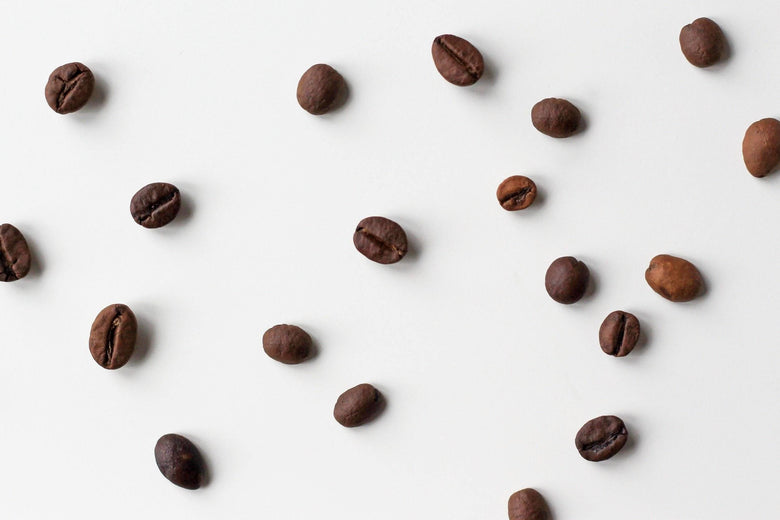Comprehending Coffee Beans: the Trip From Coffee to Blended Coffee Beans

The Beginnings of Coffee: An International Viewpoint
While you could assume of coffee as a modern staple, its origins trace back centuries, linking with cultures throughout the world. The tale starts in Ethiopia, where legend states a goat herder called Kaldi found the energizing results of coffee beans after observing his goats romping energetically after consuming them.
As profession routes increased, coffee made its means to Europe in the 17th century, swiftly gaining appeal. Each culture included its special twist to coffee prep work, improving its history.
Farming and Harvesting of Coffee Beans
As coffee's trip progressed, the focus shifted to the growing and harvesting of specific bean ranges, particularly those made use of for coffee. You'll discover that espresso beans frequently originate from Arabica or Robusta plants, each offering distinctive flavors. The suitable growing conditions include high elevations and abundant, well-drained soil, which enhance the beans' quality.
Throughout the harvest, choosing techniques vary. Timing is crucial; you want to harvest when the cherries get to peak ripeness for optimum flavor.
When harvested, the beans are planned for processing, which is necessary in determining their last preference. Recognizing the growing and collecting processes gives you understanding right into what enters into your preferred coffee, improving your appreciation for each and every mug.
Handling Methods: From Cherry to Bean
Since you have actually found out concerning gathering espresso beans, allow's discover exactly how those cherries transform into the coffee beans you love. You'll see exactly how various harvesting methods influence flavor, adhered to by the important actions of fermentation and drying out. Lastly, we'll break down the milling and grading process that determines your coffee's quality.
Collecting Methods Explained
When it comes to coffee, recognizing harvesting methods is necessary, since they directly influence the flavor and top quality of the beans you appreciate. Discerning selecting involves hand-picking only ripe cherries, guaranteeing you obtain the ideal top quality beans. Eventually, the selection of harvesting technique can greatly influence your coffee experience, so it's worth knowing just how those beans made it to your cup.
Fermentation and Drying
After harvesting, the next action in handling coffee beans play a substantial duty fit their taste. You'll discover that fermentation is essential, as it helps break down the mucilage surrounding the beans, enhancing their taste profile. Relying on the method, this process can last from a couple of hours to numerous days, with differing results based upon temperature and moisture.
Sun-drying permits the beans to soak up flavors from the atmosphere, while mechanical drying warranties regular moisture degrees no matter of weather. Appropriate drying is necessary to prevent mold and maintain the beans' high quality, eventually influencing your mug of coffee.
Milling and Grading Refine
As fermentation and drying set the phase for flavor growth, the milling and grading process warranties that just the ideal coffee beans make it to your mug. This stage includes removing the outer layers of the coffee cherry, consisting of the parchment and husk. Top notch beans receive a greater quality, resulting in a richer coffee experience.
Toasting Methods: Unlocking Flavor Potential
When you roast coffee beans, the method you choose can substantially influence the taste account. Understanding the partnership in between time, temperature, and toasting methods is crucial to revealing the possibility of your brew. Let's explore exactly how these aspects come together to create the perfect cup.
Roasting Techniques Described
While you might believe that all coffee toasting techniques yield the same outcomes, the fact is that each strategy reveals unique taste possibilities in the beans. Drum toasting makes use of a rotating drum to equally disperse warmth, improving caramelization and creating a well balanced flavor. Air roasting, on the other hand, circulates warm air around the beans, advertising a lighter roast with noticable acidity.

Effect on Taste Profile
Various toasting techniques not just affect the process but additionally significantly impact the taste profile of the coffee beans. When you select a light roast, you'll experience brilliant acidity and floral notes, showcasing the bean's beginning. In comparison, a tool roast equilibriums acidity with sweet taste, frequently exposing chocolatey touches. Dark roasts, on the other hand, highlight bold, smoky flavors, often concealing the bean's distinct qualities. Each method reveals different oils and substances, causing a wide variety of tastes. By try out different toasting styles, you can find which accounts reverberate with your taste buds. Comprehending these nuances helps you value the creativity behind your mug of coffee, enhancing your general experience with every sip.
Time and Temperature Aspects
To launch the full flavor potential of coffee beans, both time and temperature level during the toasting procedure play substantial duties. When toasting, you'll discover that greater temperature levels can rapidly create tastes, yet if you rush it, you might end up with burnt notes. Conversely, reduced temperatures permit a much more gradual taste growth, showcasing the beans' distinct features.

Timing is just as essential; extending the roast also long can cause a loss of level of acidity and brightness, while too brief a roast could leave the beans underdeveloped. Locating that wonderful place calls for method and testing. By changing these variables, you can reveal the rich, complicated flavors hidden within each bean, creating an absolutely exceptional coffee experience.
The Art of Blending: Crafting Distinct Coffee Accounts

Begin by selecting a base coffee that gives a strong structure. A brilliant Ethiopian bean can bring fruitiness, while a rich Brazilian coffee adds body.
As you blend, bear in mind that each combination narrates. You're not just making coffee; you're producing an experience. So, take your time, taste regularly, and enjoy the trip of finding your signature mix.
Brewing Approaches: How Preparation Affects Flavor
Blending coffee opens up a domain name of taste opportunities, but exactly how you make that blend can significantly affect your final cup. On the other hand, a pour-over highlights the coffee's clarity and illumination, perfect for showcasing delicate notes.
Espresso, with its high pressure, generates a concentrated shot that highlights sweet taste and crema. If you choose a lighter mixture, take into consideration a chilly mixture approach; it generates a smooth, less acidic taste.
Readjusting variables like water temperature level, grind size, and make time can change your coffee's profile. Accept the art of brewing to find the flavors concealed in your coffee blends.
The Future of Coffee: Sustainability and Technology
As the coffee sector progresses, sustainability and development are coming to be essential for attending to environmental difficulties and meeting customer needs. You'll observe that even more coffee firms are adopting environmentally friendly methods, from sourcing beans fairly to carrying out lasting farming techniques. These shifts not just assist the earth but also improve the quality of the coffee you enjoy.
You could see technologies like eco-friendly packaging and water-saving developing techniques that reduce waste. Advanced technology, such as blockchain, is additionally coming to be preferred, guaranteeing transparency in the SOE supply chain, which allows you to trace your coffee back to its origins.
Additionally, purchasing neighborhood neighborhoods and supporting farmers via fair trade initiatives fosters a much more sustainable coffee ecosystem. As you drink your next mug, keep in mind that your options can add to a brighter future for coffee. By selecting lasting brands, you're not simply enjoying a beverage; you're making a favorable impact on the globe.
Regularly Asked Concerns
What Is the Distinction Between Arabica and Robusta Beans?
Arabica beans are smoother, sweeter, and have a higher level of acidity, while robusta beans are stronger, extra bitter, and contain more high levels of caffeine. When making your coffee., you'll discover these differences in taste and aroma.
Just How Does Altitude Affect Coffee Bean Flavor?
Elevation impacts coffee bean flavor considerably. Higher altitudes generate beans with brighter acidity and complicated flavors, while reduced elevations often produce beans that are heavier and much less nuanced. You'll discover these distinctions in your cup!
What Are the Health Advantages of Alcohol Consumption Coffee?
Consuming coffee can boost your power, improve mental emphasis, and also boost physical performance. It's abundant in antioxidants, may decrease the risk of certain conditions, and can promote a much healthier metabolic rate when consumed in small amounts.
Can Coffee Beans Be Reused for Brewing?
Yes, you can reuse coffee beans for brewing, but the taste could be weak. If you enjoy experimenting, try reusing them in different ways, like chilly mixtures or contributing to shakes for an additional kick.
Exactly how Should I Store Coffee Beans for Freshness?
To keep your coffee beans fresh, keep them in an impermeable container in a trendy, dark place. Avoid revealing them to moisture, warmth, or light, as these variables can rapidly degrade their flavor and fragrance.
Comprehending Coffee Beans: the Trip From Coffee to Blended Coffee Beans.
Currently that you've discovered about gathering coffee beans, let's explore how those cherries change into the coffee beans you love.When you roast coffee beans, the approach you choose can dramatically impact the flavor account - Single Origin Espresso.While you may believe that all coffee toasting approaches produce the very same results, the reality is that each technique discloses unique flavor potentials in the beans.Different roasting approaches not just influence the process however also greatly influence the taste account of the coffee beans